The Tesla Semi has been revealed with production for the all-electric, 500-mile range lorry due to begin in 2019.
At an unveil event last night in Hawthorne, California, where the brand also showed a new Roadster sports car, company CEO Elon Musk said that his new machine, which has simply been referred to as the Tesla Truck until now, was capable of accelerating from 0-60mph in 5.0sec.
He said it was also able to hit the mark in 20sec even when laden with a trailer fully loaded with 80,000lb (almost 36 tonnes) of cargo. This trumps the average sprint time for regular diesel-powered rivals by around 40sec.
The lorry's energy recovery systems are claimed to be capable of recovering 98% of kinetic energy to the battery. For regular charging, the lorry can be connected to so-called Megachargers, which is a new high-speed DC charging solution, that is said to add about 400 miles in 30 minutes and can be installed at origin or destination points, much like the existing Superchargers.

Efficiency is boosted by a low wind resistance, with Tesla claiming that its Semi has a drag-coefficient of 0.36Cd. It states that most of its competitors are closer to 0.65Cd.
Tesla refrained from going into further detail about the lorry's drivetrain and battery, but did reveal that the vehicle features advanced autonomous technology to prevent jack-knifing of the trailer. Onboard sensors are installed to detect instability and can adjust torque sent to each wheel and independently actuate all brakes to prevent jack-knifing.
Additionally, surround cameras provide autonomous object detection and reduce blind spots, alerting the driver to safety hazards and obstacles. The lorry also introduces a new Enhanced Autopilot system, with automatic emergency braking, automatic lane keeping, lane departure warning and even event recording.
The Tesla Semi can travel in a convoy, allowing one or several Semis to autonomously follow a lead Semi.

Alongside the claims for performance and safety, Musk also said that the Semi would provide users with massive savings. Figures produced by Tesla state that owners "can expect to save $200,000 or more in savings over a million miles based on fuel costs alone".
Tesla is taking reservations for the Semi now for $5000. Production is due to start in less than two years, at which time Musk believes the company's "production bottlenecks" will be history.
These production issues relate to supply difficulties with the Model 3. They caused the reveal of the Semi to be delayed by several weeks. Tesla's resources have also been under demand helping to supply Puerto Rico with power following Hurricane Maria.
Read more about the Tesla Model 3's production bottlenecks here
The bottlenecks have hindered Model 3 deliveries from Musk's initial delivery plan, set out in Tesla's second-quarter plan, with 220 Model 3s delivered in the third quarter compared with a targeted 1500.
Tesla also has a Model Y small SUV, an electric cargo van, a minibus and a pick-up truck all slated for introduction in the coming years.
Read more
Tesla: "Model 3 is not the next-generation Tesla"
Tesla Model Y to lead ambitious range expansion plans

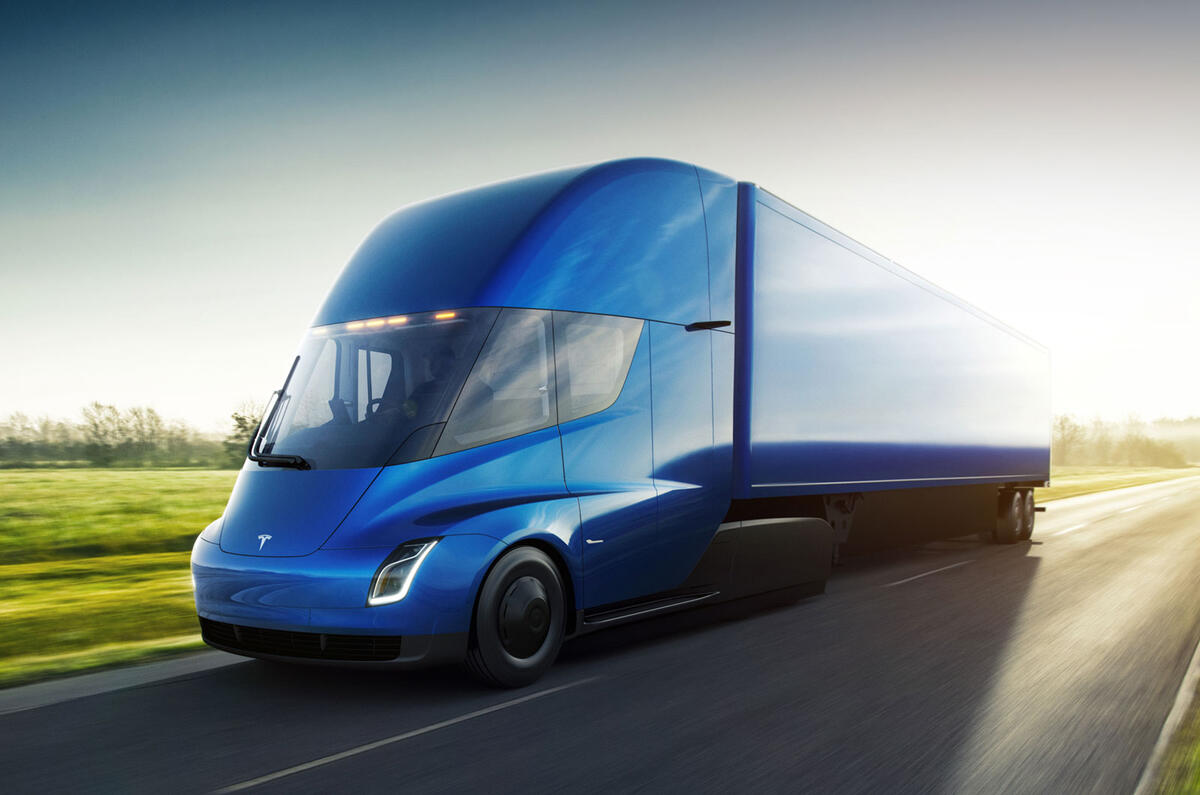
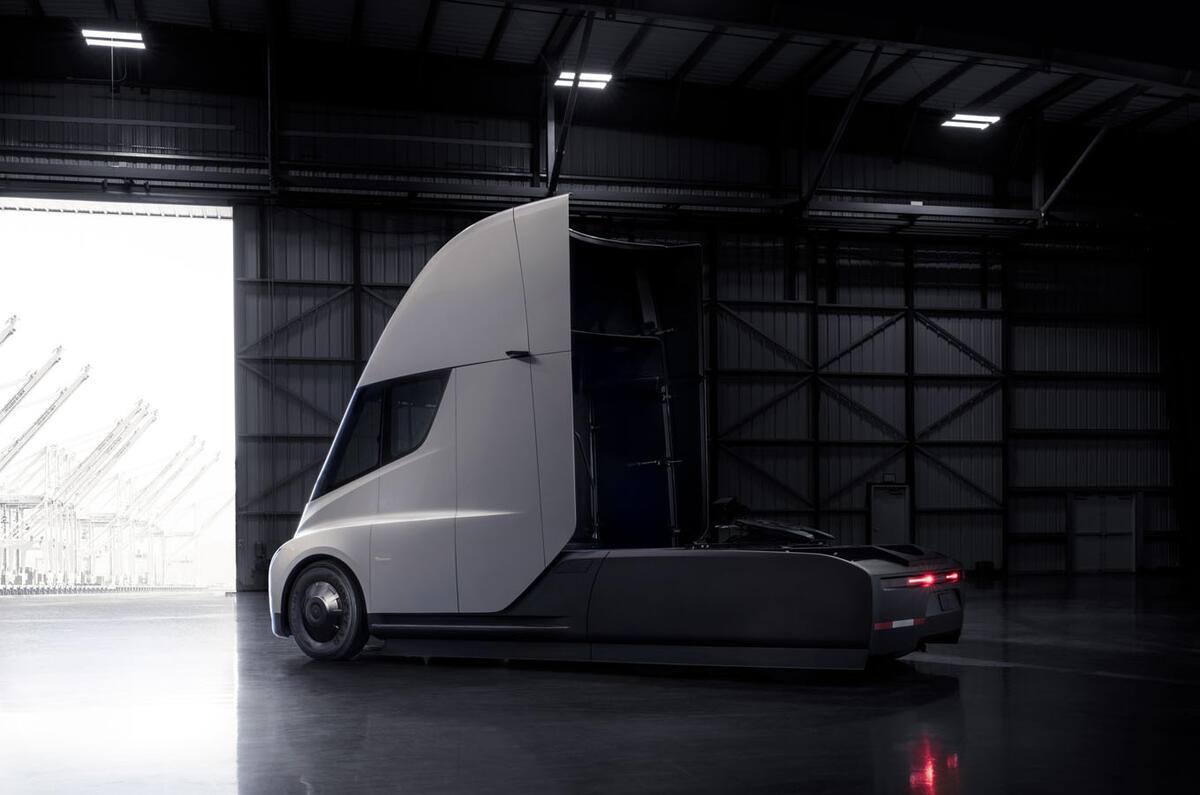
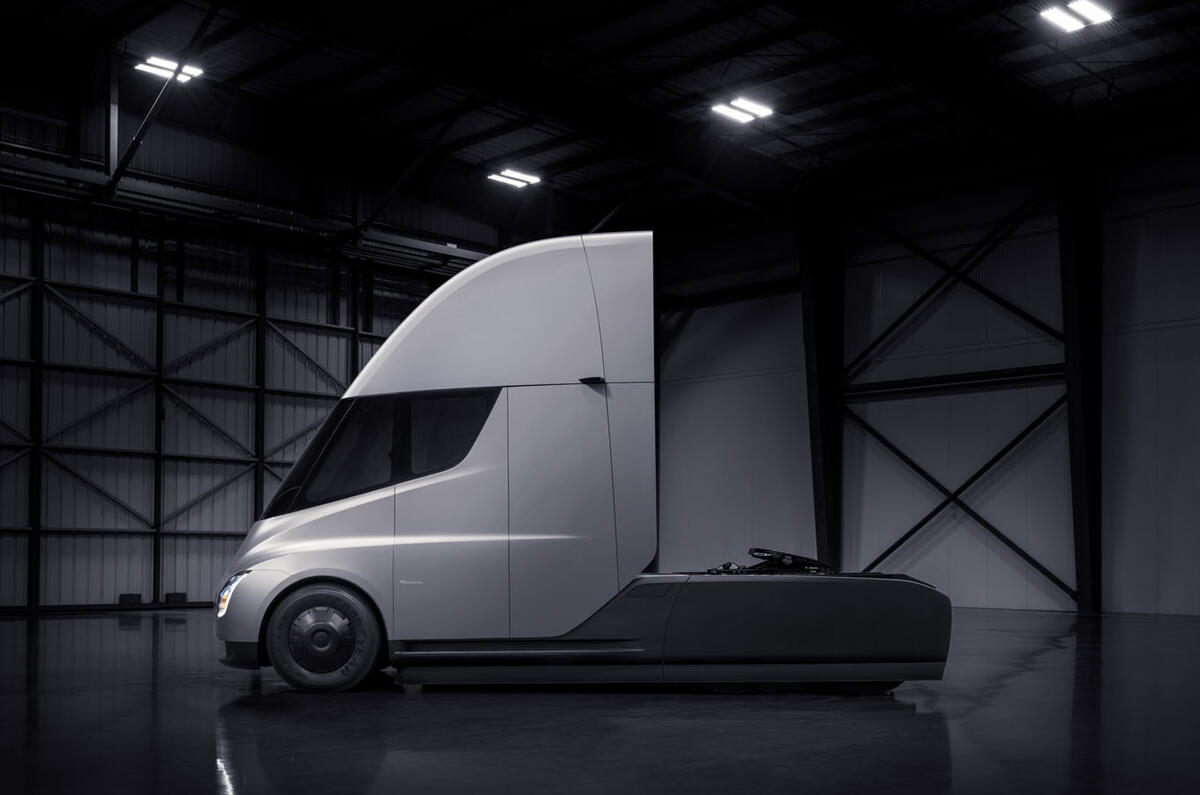
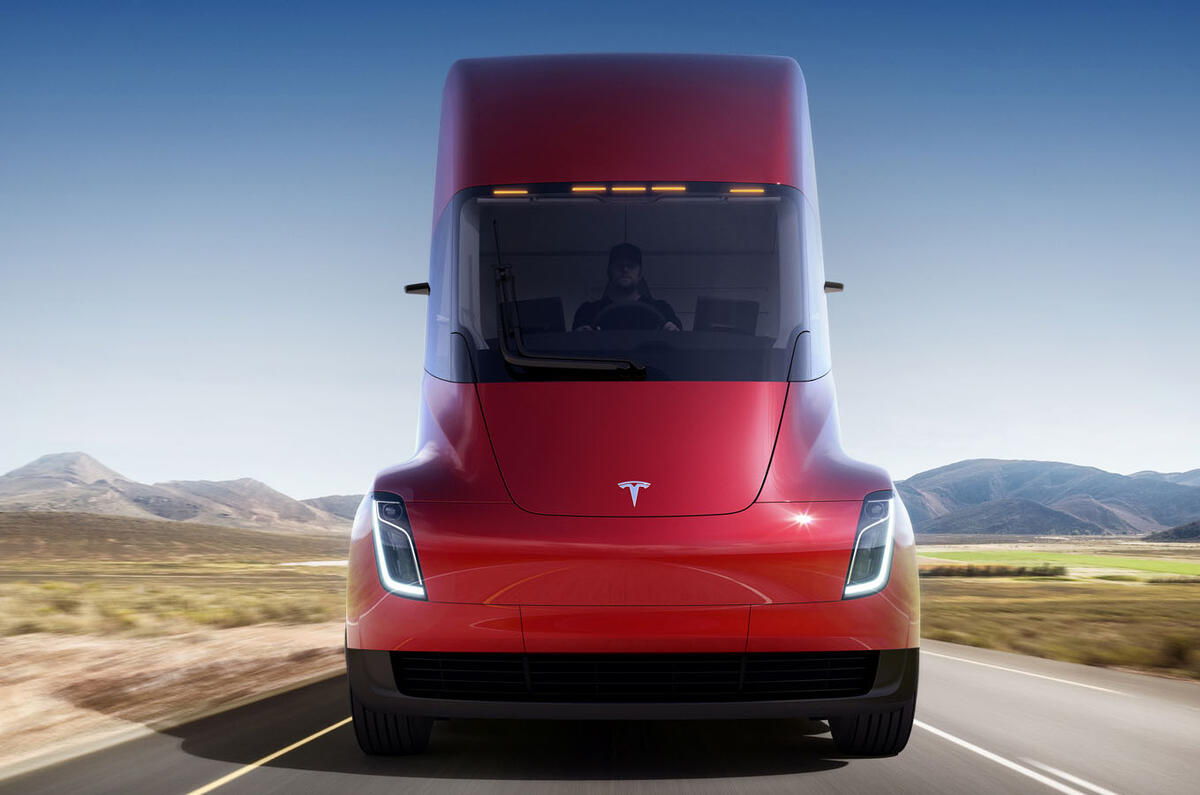
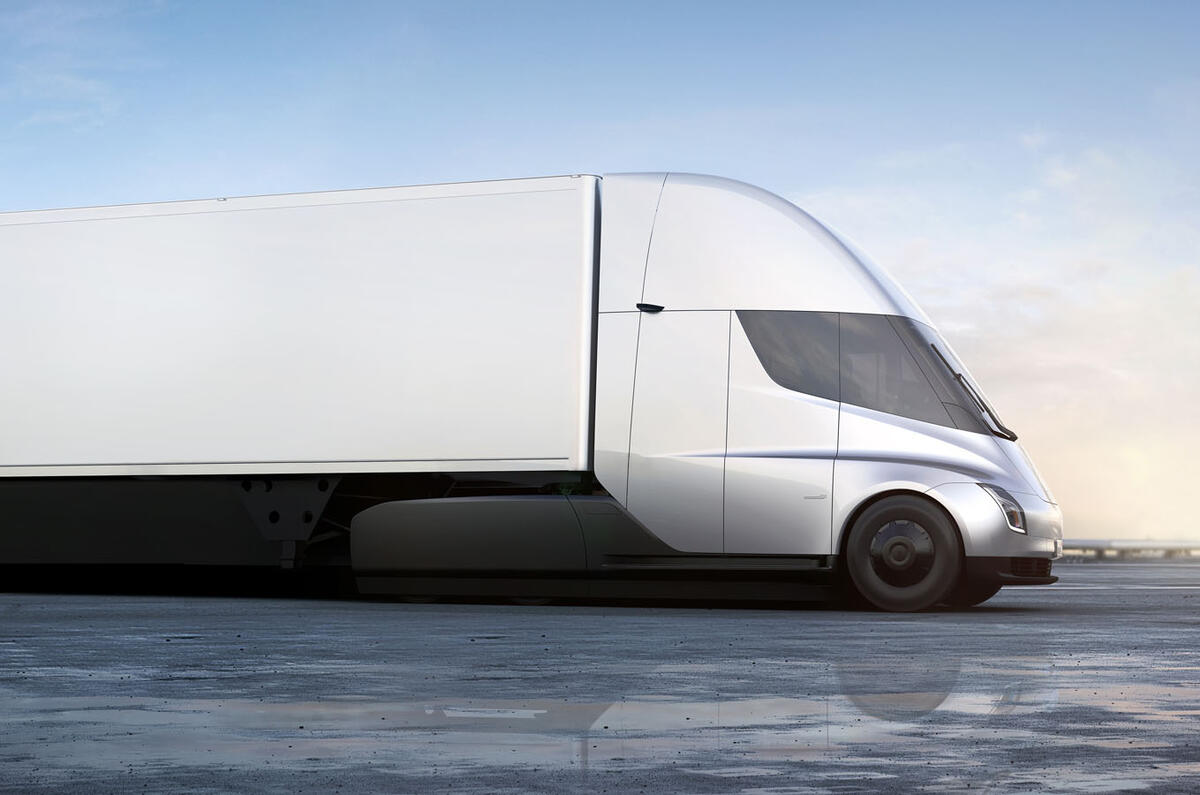
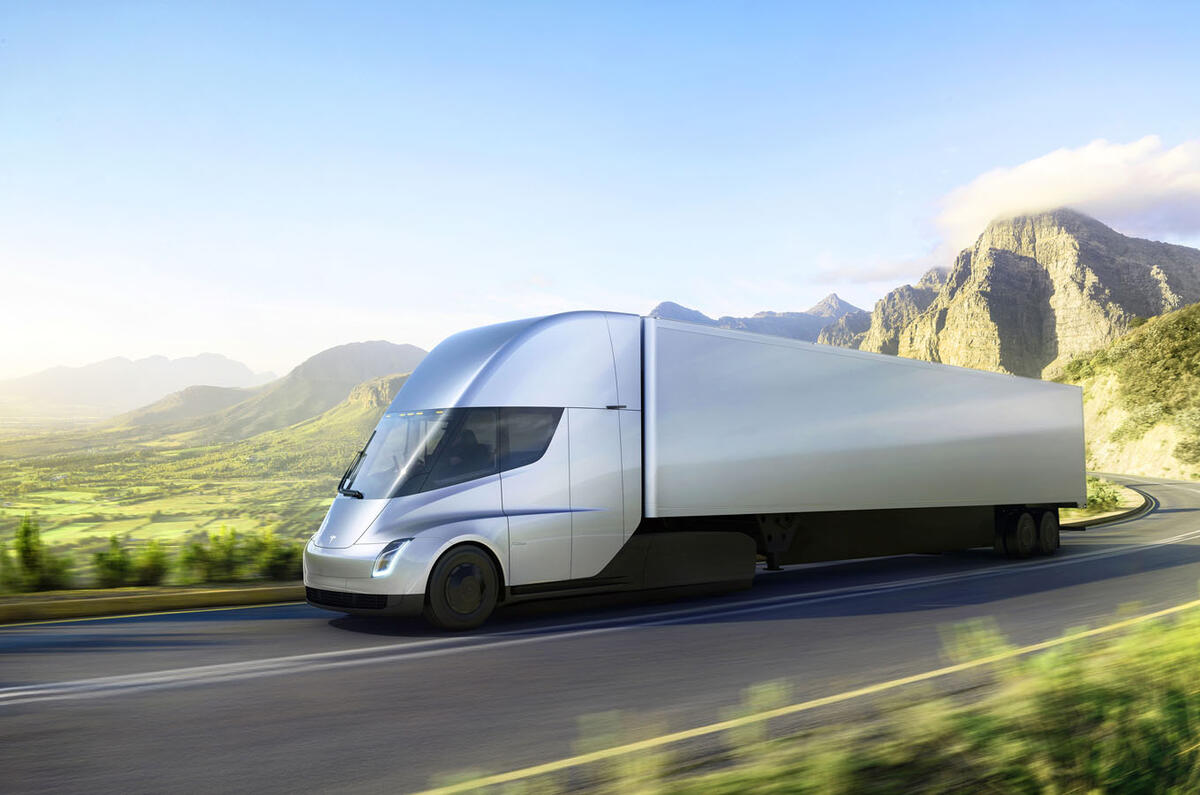
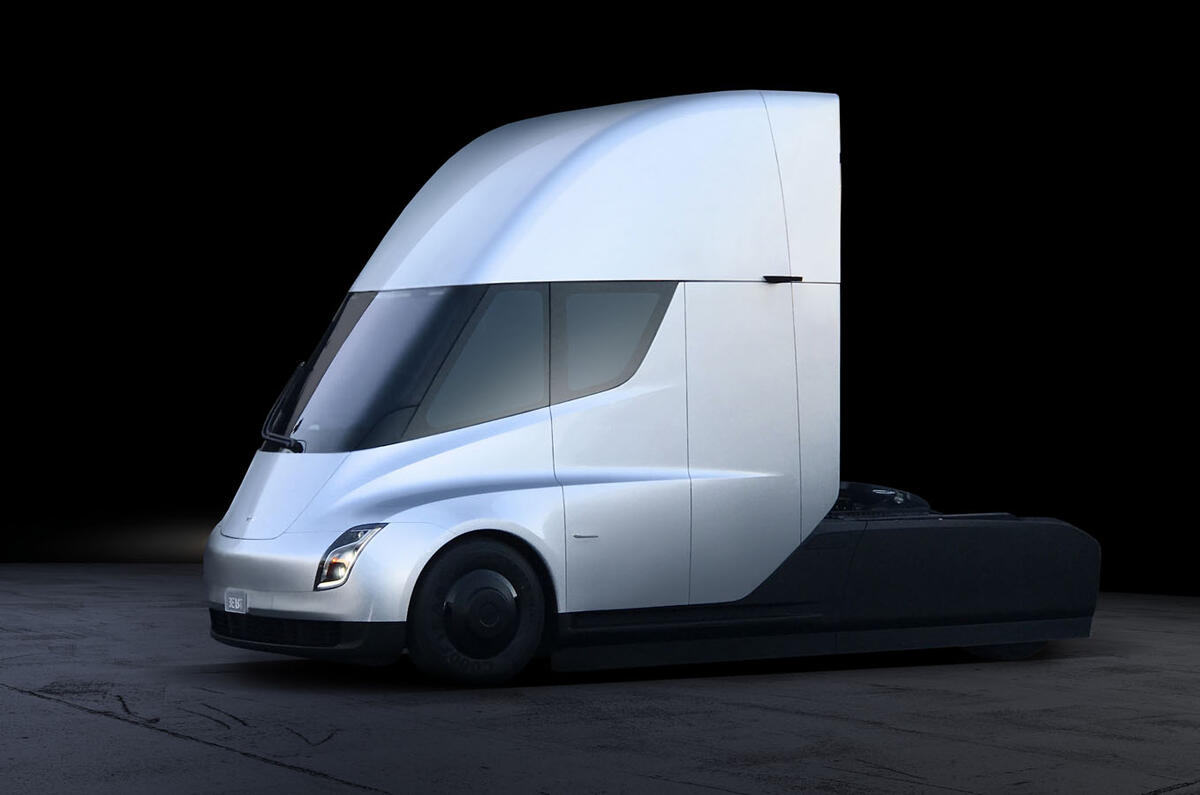
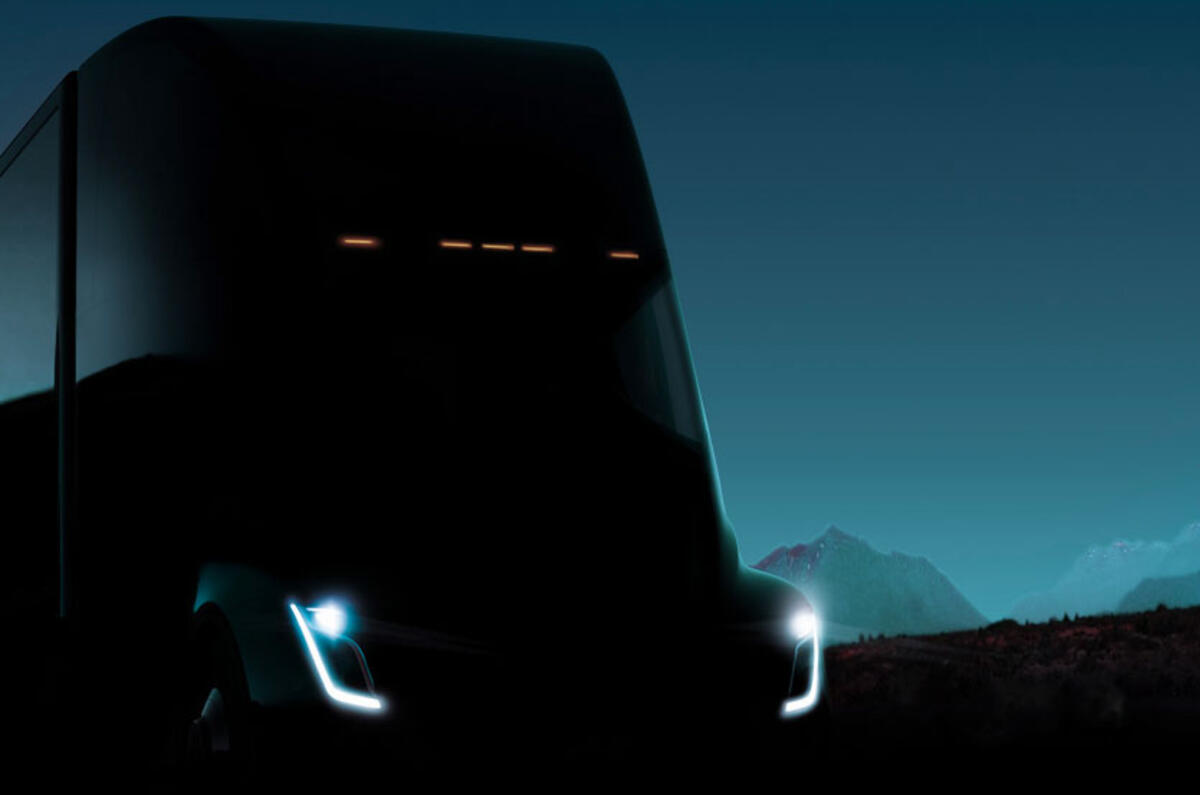
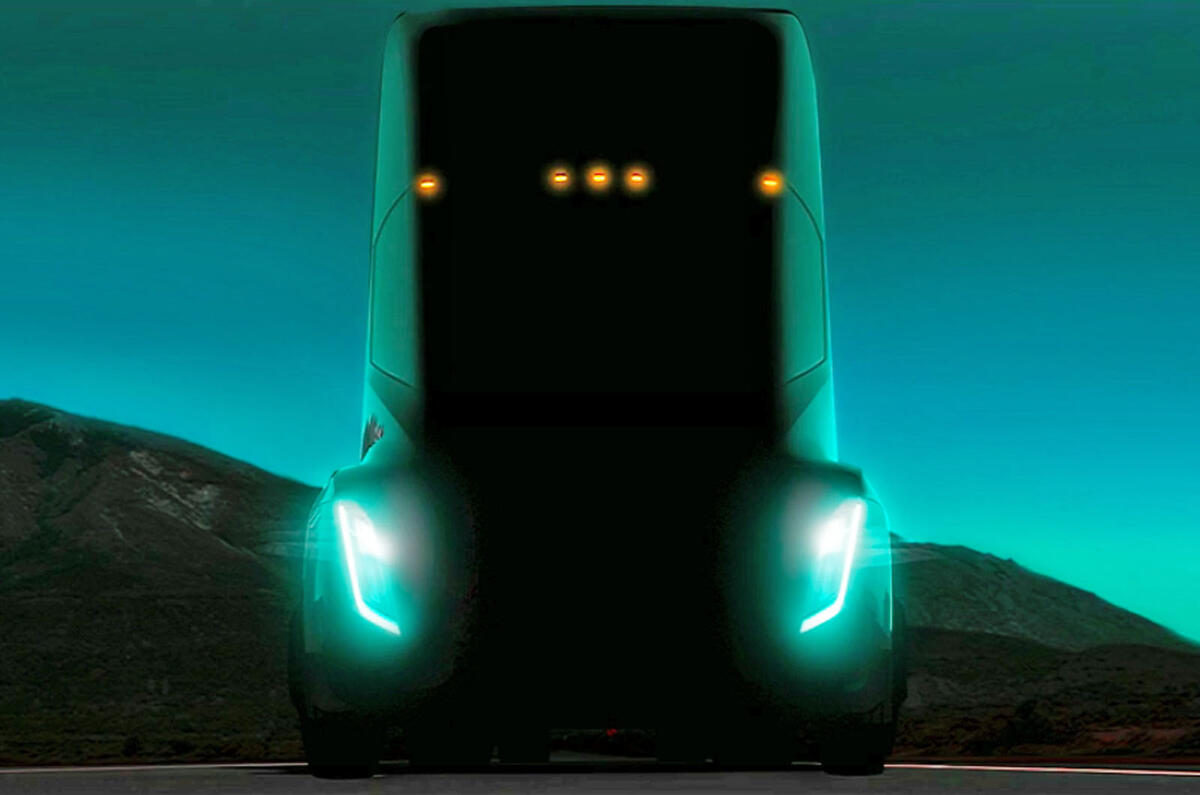
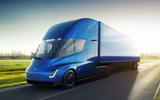
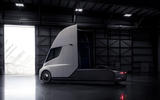
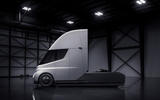
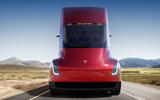
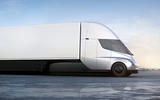

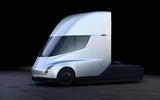
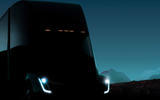


Join the debate
geed
Lorry! Bonkers British word.
typos1
Yeah Ia gree I hate "lorry"
Yeah Ia gree I hate "lorry" truck sounds much better.
Campervan
Truck? Lorry? Semi?
In the US a truck is what we in the UK call a pick up. The US call an articulated lorry a semi.
iIn the US the best selling vehicle for decades has been a truck, the Ford F-150.
Turinbrakes
Taking the lorry out for a spin
What the hell is the point in that? What will be the top model, the GT3 RRS
fadyady
Very interesting
Downunder
No range
Where I live trucks (road trains) need a minimum range of 1,0000 km. Tesla won't deliver that in the near future.
Torque Stear
Downunder wrote:
In Europe all lorries have a maximum range of 220 miles.
That is four hours at 55mph.
Once the lorry has travelled that far the drive must take a break. (I think this is similar in most rich countries)
220 miles is a feasible range for an electric truck, the battery would weigh around 5 tonnes, but the rest of the truck will be much lighter than a diesel so the difference in carrying capability will be pretty minor.
You will require a charging standard that will recharge the truck in around 30 minutes or so or be able to swap batteries (much easier with trucks as they have similar form factors across manufacturers).
This requires a charging or swapping network.
The key reason Tesla are doing this is scalability, a charging network does not need to be that extensive to be useful for at least some operators. Their model is likely to be that they will sign some deals with some large hauliers, they will be able to plan a portion of their fleet to workaround a swapping or "ultracharger" network.
The data and experiance they achieve with this will put them in a leading position and also demonstrate utility, as the number of customers grows it will support more and more chargers eventually there will enough that they do not impact operations at all for most operators.
Herald
@ geed should be pleased to know ...
Wide cars in a world of narrow.
ianp55
New Tesla HGV
smokescreen38
Tesla truck
Pages
Add your comment